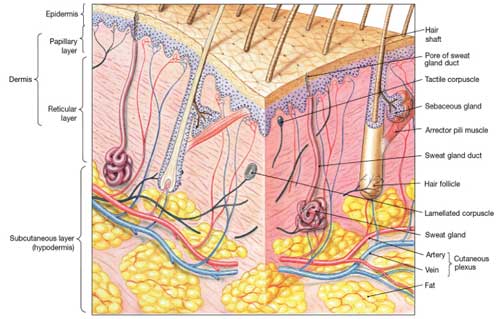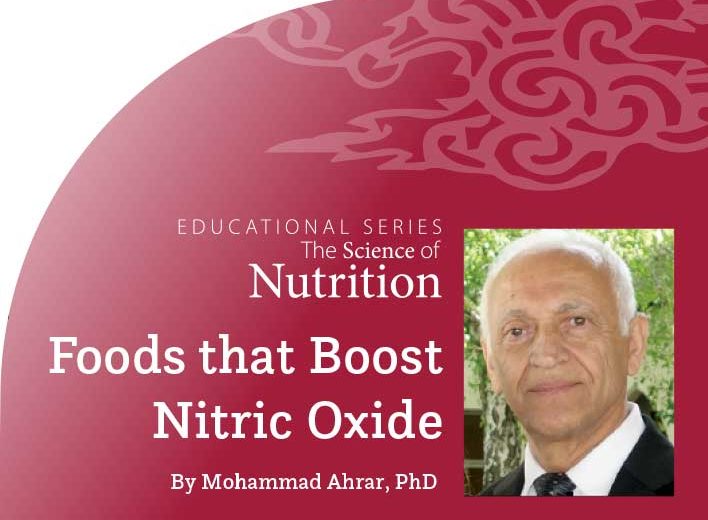Educational Series The Science of Nutrition
By Mohammad Ahrar, PhD
Introduction
Like many Iranian families who discuss the nutritional value of foods at the dinner table, a few days ago, one of our family members raised the question of the benefits of collagen protein supplements, which are heavily marketed as solutions for nice skin and joint problem prevention. I gave it a thought for a moment and decided to write this article to reveal some facts about collagen and its role in our health—and whether the use of it as a food supplement has any benefit, as some people may think.
Before we get into the food value of collagen as a protein supplement, I will give some basic scientific information about collagen and what makes it different from other protein sources.
 What is collagen?
What is collagen?
There are thousands of different proteins in the body that vary in size, shape, and function. Collagen is a fibrous protein and is made up of twisted polypeptide chains—which are chains of amino acids—making it the strongest fibrous protein in the body. It is the most abundant protein in the body, and almost all organs of the body contain different forms of collagen. It is found in bones, skin, blood vessels, muscles, tendons, ligaments, cartilage, and many other tissues and organs. You can think of collagen as the “glue” that holds different structures together. In fact, the word comes from the Greek word “kólla,” which means glue (2). Most people eat collagen in their diets. As an example, when you cook a whole chicken or any meat with bone, after the product is cooled, the jelly-like material includes different forms of collagen.
Why is collagen different from other proteins?
Like other types of proteins, collagen is also made up of amino acid subunits. However, during the process of collagen synthesis, other molecules, including sugars, interact with amino acids to produce glycoprotein, which gives collagen a glue-like property. Additionally, collagen contains specific amino acids—glycine, proline, hydroxyproline, and arginine—in high ratios. None of them is an essential amino acid. Hydroxyproline is unique to collagen and forms specifically stable bonds with other amino acids in the complex collagenous fibers, which are typically arranged in branching bundles of indefinite length. This form of collagen is very tough and insoluble in water. Some other protein sources, such as egg, meat, fish, and the proteins in dairy products, provide all essential amino acids and have a proper ratio of amino acids. Moreover, the protein molecules in these foods, and plant proteins are less complex than the type 1 collagen.
Types of collagen
There are at least 16 types of collagen, but 80 to 90 percent of the proteins belong to types 1, 2, and 3. Type 1 is referred to as native collagen, found in connective tissues under the skin and in tendons, ligaments, vertebral discs, joints, and other tissues of the body. This type of collagen is composed of large triple helix polypeptide chains, which makes it a very strong fibrous protein, insoluble in water. It is used in collagen casings, medical materials, sponges, and many other commercial products.
Types 2 and 3 are extracted from raw materials, such as bone scraps, by using heat and applying enzymes to break the triple helix of polypeptides into smaller peptides to make gelatin and similar products. Gelatin dissolves in warm water, and has many household and culinary applications, such as gummies, candies, jellies, sauce thickeners, etc. (4).
Sources of collagen
Collagen is found only in animals and is naturally made in the body. Most organs of the body, including bones, cartilage, skin, hide, and the hooves of animals, contain collagen. The industry defines “hides” as the skins of large animals such as cows and buffalo and the term “skins” refers to smaller animals such as goat, sheep, deer, pig, fish, etc. Commercial collagens can be produced from any of the mentioned animal sources. Collagen fiber supplements advertised by commercial companies are mostly type 3 collagen, which is a hydrolyzed form of fibrous collagen containing simpler polypeptides. This form of collagen is usually used as food supplement in the market.
Role of collagen in the body
Collagen is the most abundant protein in the human body, making up around 30% of the total protein content. Collagen is an important fibrous protein in connective tissues found in all organs of the body and is an integral part of bones and cartilage. About two-thirds of the skin, mainly in the dermis, is made of fibrous collagen. The skin’s top layer, called the epidermis, is comprised of several layers of keratinous cells (keratin itself is a tough protein, also found in the hair, nails, and hooves of animals). The second layer of the skin, called the dermis, is much thicker than the epidermis and is comprised of several layers of collagenous fibers which gives rigidity and strength to the skin. The fat layer under the dermis, called the hypodermis, plays a major role in the softness of the skin, which gives it a younger look. The picture below is a sketch of the skin, showing the epidermis, dermis, and hypodermis (6).
How do wrinkles appear in the skin?
As we age, formation of collagen gradually diminishes and, in a person’s later years, the destruction of collagen outpaces its production, which results in wrinkles and looseness of the skin. Studies indicate that people begin to lose about 1% of their collagen per year during their mid-20s and as much as 30% during the first 5 years of menopause (5). Sun exposure enhances this process.
Is collagen a good-quality protein?
Factors that distinguish good-quality from poor-quality proteins include an abundance of essential amino acids, ratio of essential amino acids to non-essential amino acids, digestibility of the protein when eaten, and presence of toxic materials or allergenic compounds. There are 20 amino acids that make proteins—nine of them are known as essential amino acids because the human body cannot synthesize them, so they must be supplied through the diet.
Good quality proteins (known as complete proteins) provide all essential amino acids in adequate amounts and proportions needed by the body to produce its own proteins and maintain tissue repair and growth. Low-quality proteins (also known as incomplete proteins) are low in one or more of the essential amino acids, and/or do not have the proper ratio of them (Peyk #162).
Collagen consists of high levels of non-essential amino acids (mentioned before), low in essential amino acids, and does not have the proper ratio of amino acids that the body requires. For these reasons, collagen is not considered a high-quality protein for human consumption.
Is collagen digestible?
When food is consumed, the ingested proteins—including collagen—are partially broken down into smaller molecules (polypeptides) by the stomach enzyme (pepsin). The partially digested proteins enter the small intestine and are further broken down into smaller peptides and finally into amino acids by pancreatic and intestinal enzymes. Amino acids will be absorbed into circulating blood and transported to different tissues and organs for synthesis of new proteins. However, digestion of collagen may not be as easy as digestion of poultry or plant sources.
Does the collagen that we eat replace the collagen in our body?
In short, different protein sources contain different proportions of amino acids. All ingested proteins can be broken into amino acids and absorbed into the blood. At the tissue level, different cells use all 20 amino acids for the synthesis of specific proteins controlled by each individual DNA regardless of the source of the amino acids. Studies show that the body makes procollagen by combining two amino acids—glycine and proline. These amino acids are present in collagen as well as in most other protein sources, even from plant proteins. Therefore, collagen is synthesized form existing amino acid pools available to the cells regardless of the source of proteins.
Are collagen supplements beneficial?
Commercial advertising espouses the beneficial effect of collagen supplementation for healthy skin and joints. For centuries, Chinese women have viewed collagen as a fountain of youth, routinely consuming foods like pigs’ feet, shark fins, and donkey hide in hopes of smoothing withered skin and preserving aging joints (1). Studies indicate that a group of elderly people who took 2.5 or 5 grams of collagen daily for 8 weeks showed improvement in skin elasticity, compared with those who did not take it. In another study, the group of women who took 1 gram per day of a chicken-derived collagen supplement for 12 weeks showed 76% less dryness and fewer visible wrinkles. Other reports indicate that collagen supplements can heal wounds faster, reduce wrinkles, and make skin look younger.
The science behind most of the findings is still controversial. Some health professionals also remain skeptical about the effect of collagen supplement for skin repair. Dermatologist Lauren Eckert Ploch, based in Augusta, Georgia, says “stomach acids break down collagen proteins you eat before they reach the skin intact,” and she does not believe that collagen supplements per se have much effect on skin repair.
Does collagen cream repair wrinkles?
Studies have shown that collagen creams work only on the skin surface and, like other moisturizers, mainly slow the rate of water loss from the skin and help to keep the skin supple, but they can’t get under your skin. Even collagen type 3, which contains simpler peptides, is comprised of molecules that are too large to be absorbed through the skin.
Possible side effects of commercial collagen powder
Most commercial collagens are made from ground-up fish, chicken, pig, and cow parts, and these parts can be contaminated by heavy metals, such as cadmium. Dermatologists and consumer groups have also expressed concern that ground-up hooves, hides, bones, and nerve tissues—particularly if they come from cows—could carry diseases like bovine spongiform encephalopathy (BSE) or mad cow disease. Human consumption of BSE-infected meat has been linked to neurological disorders. In 2016, the Food and Drug Administration (FDA) prohibited the use of some cow parts in dietary supplements to “address the potential risk” of the presence of BSE. However, the FDA exempted gelatin—a key collagen source—from the ban “as long as it is manufactured using specified industry practices.” Companies are required to comply with federal “good manufacturing practices,” which prohibit unsafe levels of contaminants like heavy metals.
Summary
Collagen is a complex protein and is the most abundant protein in the body. It is found in bones, skin, muscles, tendons, and many other tissues and organs of animals. About two-thirds of the skin is made of fibrous collagen. Collagen consists of high levels of non-essential amino acids, but low in essential amino acids, and has not a proper ratio of amino acids that the body requires, which renders it as a poor-quality protein. It is advertised as a protein supplement to alleviate skin wrinkles and promote joint health. Commercial collagens are made from ground-up fish, chicken, pig, and cow parts, which can be contaminated by heavy metals or other unhealthy materials.
References
1- https://www.webmd.com/skin-problems-and-treatments/news/20191212/collagen-supplements-what-the-research-shows
2- https://www.healthline.com/nutrition/collagen
3- https://www.healthline.com/nutrition/collagen#nutrients-that-increase-collagen
4- https://www.biologyonline.com/dictionary/collagen
5- https://www.peptan.com/makeup-of-collagenpeptides/
6- Human Anatomy & Physiology, 9th ed., Elaine Marieb and Katja Hoehn (2013).


















